

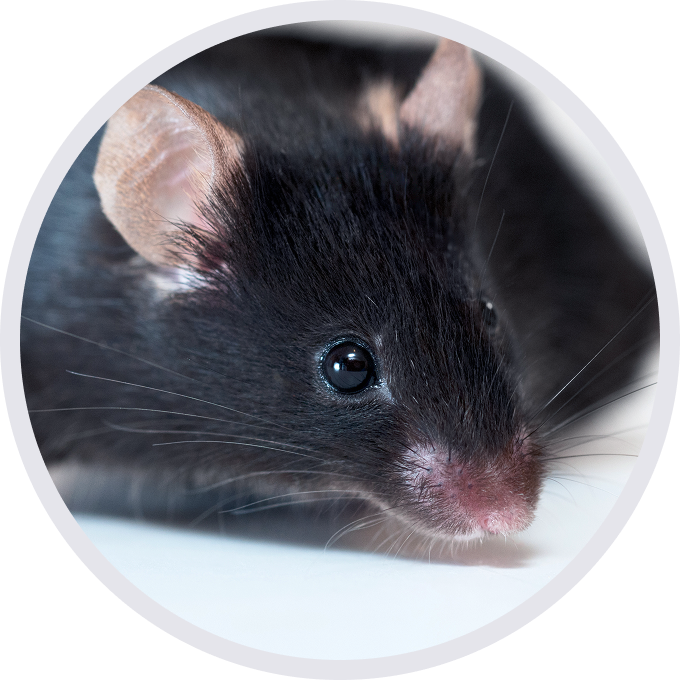
C57BL/6N-Ms4a1tm2(MS4A1)Bcgen/Bcgen • 111231
| Product name | B-hCD20 mice |
|---|---|
| Catalog number | 111231 |
| Strain name | C57BL/6N-Ms4a1tm2(MS4A1)Bcgen/Bcgen |
| Strain background | C57BL/6N |
| NCBI gene ID | 12482 |
| Aliases | MS4A1, B1, Bp35, CD20, CVID5, LEU-16, MS4A2, S7, membrane spanning 4-domains A1 |
Gene targeting strategy for B-hCD20 mice.
The exons 2-7 of mouse Cd20 gene that encode the whole molecule (ATG to STOP codon) are replaced by human counterparts in B-hCD20 mice. The promoter, 5’UTR, and 3’UTR region of the mouse gene are retained. The human CD20 expression is driven by endogenous mouse Cd20 promoter, while mouse Cd20 gene transcription and translation will be disrupted.
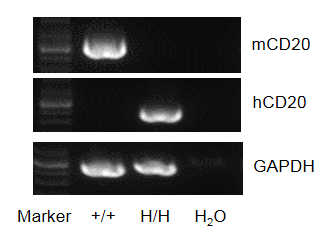
Species specific analysis of CD20 gene expression in wild-type C57BL/6 mice and homozygous humanized B-hCD20 mice by RT-PCR.
Splenocytes were collected from wild-type C57BL/6 mice (+/+) and homozygous B-hCD20 mice (H/H). Mouse CD20 mRNA was detectable only in wild-type C57BL/6 mice. Human CD20 mRNA was detectable only in homozygous B-hCD20 mice, but not in wild-type C57BL/6 mice.
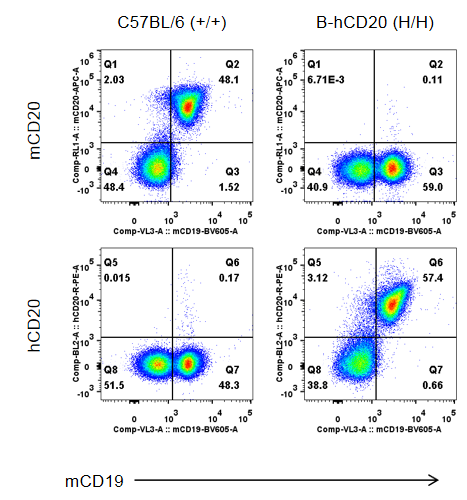
Strain specific CD20 expression analysis in wild-type C57BL/6 mice and homozygous humanized B-hCD20 mice by flow cytometry.
Splenocytes were collected from wild-type C57BL/6 mice (+/+) and homozygous B-hCD20 mice (H/H). Protein expression was analyzed with anti-mouse CD20 antibody (Biolegend, 152107) and anti-human CD20 antibody (Biolegend, 302305) by flow cytometry. Mouse CD20 was only detectable in wild-type C57BL/6 mice. Human CD20 was exclusively detectable in homozygous B-hCD20 mice, but not in wild-type C57BL/6 mice.
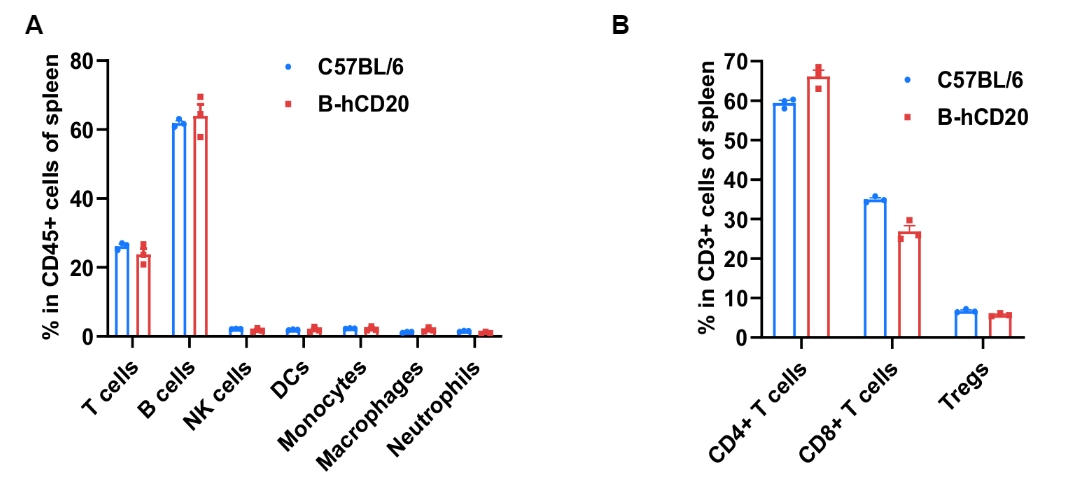
Frequency of leukocyte subpopulations in the spleen by flow cytometry.
Splenocytes were isolated from wild-type C57BL/6 mice and homozygous B-hCD20 mice (female, 9-week-old, n=3). A. Flow cytometry analysis of the splenocytes was performed to assess the frequency of leukocyte subpopulations. B. Frequencies of T cell subpopulations. Percentages of T cells, B cells, NK cells, DCs, monocytes, macrophages, neutrophils, CD4+ T cells, CD8+ T cells and Tregs in B-hCD20 mice were similar to those in C57BL/6 mice, demonstrating that the humanization of CD20 does not change the frequency or distribution of these cell types in the spleen. Values are expressed as mean ± SEM.
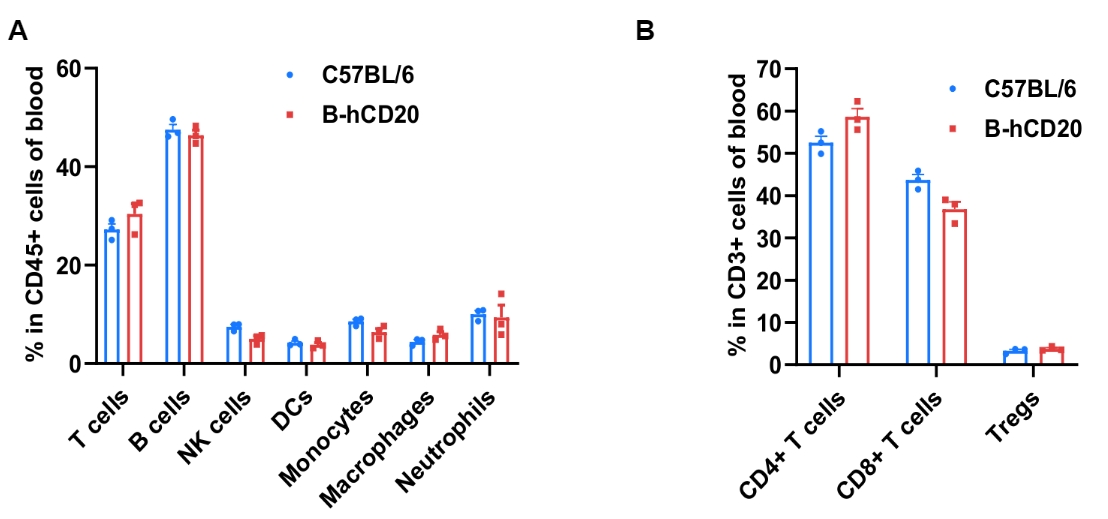
Frequency of leukocyte subpopulations in the blood by flow cytometry.
Blood cells were isolated from wild-type C57BL/6 mice and homozygous B-hCD20 mice (female, 9-week-old, n=3). A. Flow cytometry analysis of the blood cells was performed to assess the frequency of leukocyte subpopulations. B. Frequencies of T cell subpopulations. Percentages of T cells, B cells, NK cells, DCs, monocytes, macrophages, neutrophils, CD4+ T cells, CD8+ T cells and Tregs in B-hCD20 mice were similar to those in C57BL/6 mice, demonstrating that the humanization of CD20 does not change the frequency or distribution of these cell types in the blood. Values are expressed as mean ± SEM.

Frequency of leukocyte subpopulations in the lymph node by flow cytometry.
Leukocytes were isolated from wild-type C57BL/6 mice and homozygous B-hCD20 mice (female, 9-week-old, n=3). A. Flow cytometry analysis of the leukocytes was performed to assess the frequency of leukocyte subpopulations. B. Frequencies of T cell subpopulations. Percentages of T cells, B cells, NK cells, CD4+ T cells, CD8+ T cells and Tregs in B-hCD20 mice were similar to those in C57BL/6 mice, demonstrating that the humanization of CD20 does not change the frequency or distribution of these cell types in the lymph node. Values are expressed as mean ± SEM.
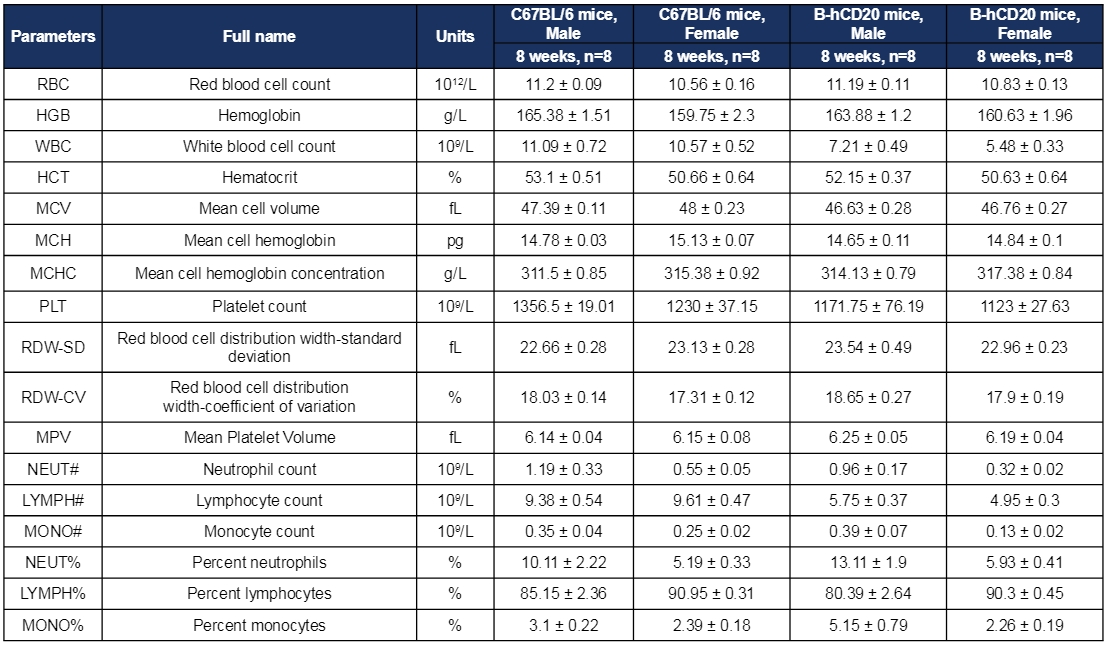
Complete blood count (CBC) of B-hCD20 mice. Values are expressed as mean ± SD.
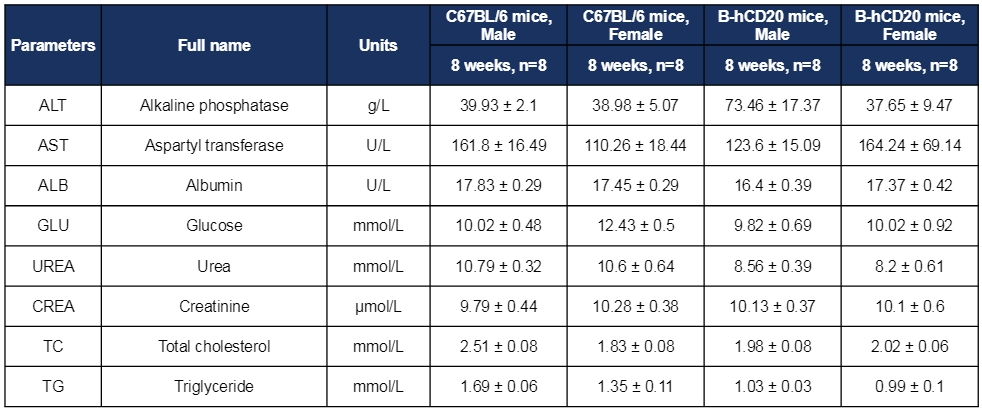
Biochemical test of B-hCD20 mice. Values are expressed as mean ± SD.